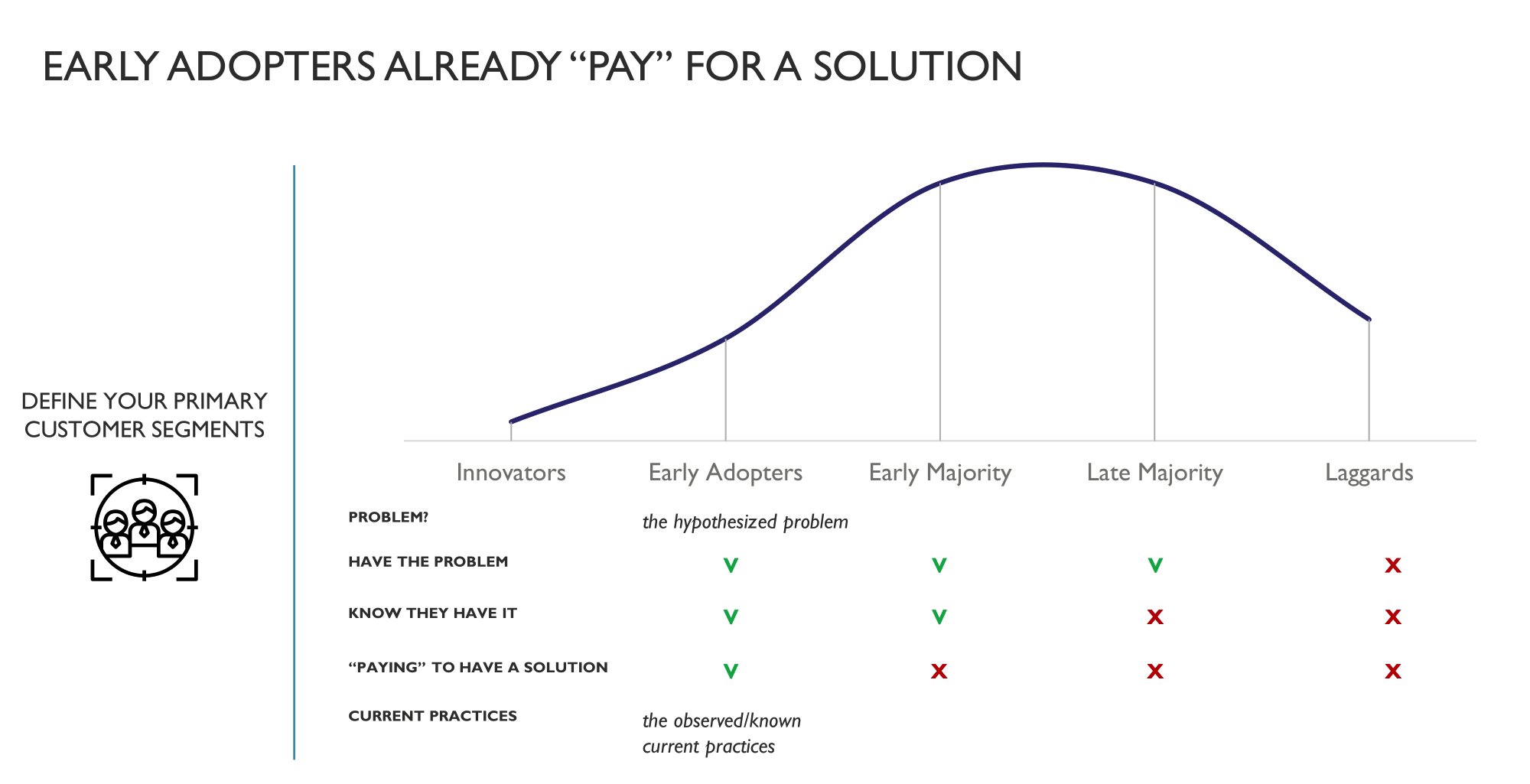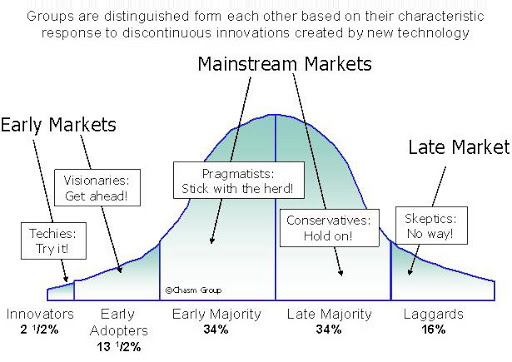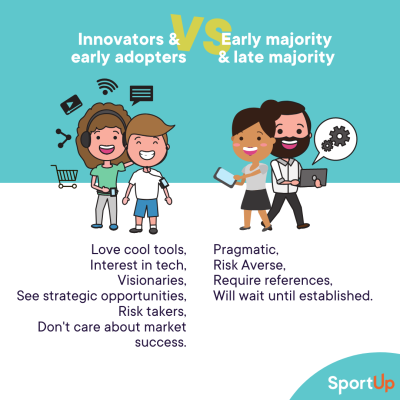
Two Types Of Customers Sport Startups Absolutely Need To Convince First
27th May 2020
How do innovators like you get the mass majority to adopt your innovation so you can grow your startup into a strong and sustainable business? Not an easy question to answer, but experience and research uncovered many indicators on what startups should -or not- do.
One of those indicators is found within the ‘Technology Adoption Lifecycle’, which is a well known model throughout the tech scene. The model explains how people with a certain demo accept or adopt new products, which is based on their sociological and psychological attributes.
According to imec innovation manager and SportUp coach Joris Finck, understanding the Technology Adoption Cycle leads to an important insight: “Startups who can convince the early market (consisting of the Innovators and early adopters) to buy their product will most likely gain success in the long run.”

Why? Let’s find out.
The law of focus: segment your market.
Focus is a main aspect in the startup development process, which starts with your target audience. You need to examine and research the market, to find the right niche audience to focus on; not too small (avoiding the ‘one-lead-user trap’) nor too general.
Diving deeper into that audience, the next step should be defining the segments of users, and figure out where they fit into the technology adoption model. In the model, consumers are divided into 5 categories: innovators, early adopters, early majority, late majority, and laggards. The first two are considered the ‘early market’, the latter the ‘mainstream market’.

Each category features different characteristics about consumers to shed light on when they'll be on board with innovations, like for example a climbing data tracker or a digital ultra trail running coach.
So why give more attention to the innovators and early adopters in the startup phase?
Innovators and Early Adopters are vastly different from the majority of consumers.
An example of a successful startup adapting this approach, is Belgium based startup Deliverect who recently raised 16 million euros. Starting out with a focus on a small niche market, they validated their services in order to scale up to a bigger market.
Joris explains: “Both innovators and early adopters share characteristics that are profoundly different from the other three categories: they are softer in their evaluation and judgement towards the startup. They’re open for cool new things, see opportunities in using innovative products and tools, and are eager to use new technologies. Also more prone to risk-taking, they understand that the product is still unfinished and in development, with more features coming up.”
“Consumers within the early majority and late majority on the other hand, have other expectations: they are more pragmatic, risk averse, and expect the product to be finished, fully up and running. It’s much harder to get them to pay for your product, they need more persuasion.”

“So from an innovation perspective, it is thus more useful in a startup phase to focus at the early adopters and get them on board in order to validate your solution, before you offer it to a more 'demanding' audience.”
“The mainstream market becomes your focal point as soon as you move beyond the validation phase (growing into a scale-up), where you can address them and show them the proof they need - validated by the innovators and early believers.”